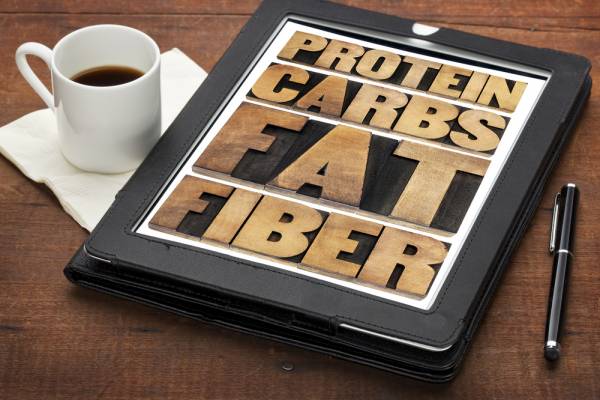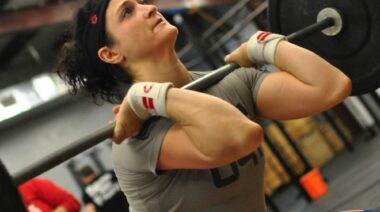Regardless of how long you have been on your fitness journey, chances are you’ve at least heard of flexible dieting or IIFYM (if it fits your macros). If you have, you’ve also probably seen the controversy and misconceptions this topic can generate. As a layperson, who are you to believe?
For starters, flexible dieting is not a diet – it’s a nutritional concept. The basic rundown is simple: You have a daily calorie, macronutrient (carbohydrate, protein, fat), and fiber target to hit and as long as those specific numbers are achieved, then food selection is left up to your personal preference. That is an oversimplification. The ins and outs of flexible dieting can be a lot more intricate, but it’s this oversimplification that lends to the misconceptions floating around the Internet.
Here are the misconceptions I feel are most important to discredit in an attempt to educate the masses and clean up one of the more controversial topics in fitness:
1. Flexible Dieters Only Eat Junk Food
This fallacy originated on social media. I am actually partially to blame for this, along with all of the other flexible dieters who post pictures of Pop Tarts, doughnuts, cake, pizza, and other junk food on Facebook and Instagram, usually including the hash tags #FlexibleDieting and #IIFYM just to rustle some clean-eating jimmies.
Are those the only foods we eat? Definitely not, but no one needs to see another picture containing Tupperware, chicken, asparagus, and sweet potato.
The fact is, in order actually hit macronutrient numbers that are conducive to building muscle, losing fat, and improving performance, it would be impossible to only eat junk. The majority of a flexible diet consists of what would typically be considered healthy food – lean meats, complex carbs, and quality fats. The only difference is a flexible diet allows you to have a treat while staying on the diet.
Where people get confused is comparing food items that do not contain a similar macronutrient breakdown. For example, I often hear people say something along the lines of, “I feel, look and perform better eating sweet potatoes than I do eating doughnuts.” But these two food items do not have comparable macros. An 8oz sweet potato comes in with around 6g of protein, 48g of carbs, minimal fat, and a good dose of fiber. In comparison, an average doughnut is going to contain a lot more fat and sugar and no fiber. This is not to say you cannot eat doughnuts. You can – just don’t compare them nutritionally to sweet potatoes.
As long as macronutrient goal numbers are hit (along with fiber), food choices take a backseat to personal preference whether that is oatmeal or Pop Tarts. The goal is to stop thinking of foods as “clean” or “dirty,” but see them for their macronutrient composition. This will go a long way in helping you understand the freedom of food selection that flexible dieting creates.

2. Flexible Dieting Doesn’t Work For Me
Did science throw a secret party and forget to invite you? Without even getting into the science, here is the bottom line: every diet regardless of food selection consists of specific macronutrient numbers. Even if you eat eight meals a day of chicken, rice, and asparagus, those foods still have a macronutrient number at the end of the day. In essence, every diet is a macro diet.
And there is no rule that in order to follow a flexible diet you need to eat junk food. The beauty of flexible dieting is that you can eat whatever foods you want as long as you track them and they fit into your macros. Let’s say you are a unique individual who actually enjoys clean foods over more tasty treats. While I would argue that you are kidding yourself, you can still follow a flexible diet eating chicken and sweet potatoes. All you have to do is figure out your macros, and then fit your clean foods into them.
For you clean eaters, the benefit of flexible dieting comes in the form of consistency. When you follow a clean diet, unless you are tracking your foods (weighing and measuring), there is no way to know if you are actually consuming the same amount of foods day in and day out. An extra 4oz of chicken here, half a cup of rice less there, and boom your diet is all over the place without you even realizing it. The idea that a flexible diet can’t work for you is invalid. It can work for you and it would probably be better than what you are currently doing.
3. It Works for Aesthetics, But It’s Not Healthy
Yes, flexible dieting originated within the bodybuilding community. People began to realize they could get the same body composition results hitting macronutrient targets as they could eating clean. Plus, they didn’t experience any of the psychological side effects that can occur when following a strict diet. This quickly became notorious as a bodybuilding diet, as most of the advocates were in fact bodybuilders.
As flexible dieting began to branch out into the mainstream the question became, “Can it work for general health, too?” I have even heard bodybuilders ask this same question. The answer is, yes, it can.

A flexible diet is mostly whole and nutritious foods. In order to hit an adequate amount of fiber in a day, you are going to need to eat a variety of different fruits and vegetables. Does every flexible dieter do this? No, they probably do not, however, I doubt that most clean eaters do either.
I would even argue that a flexible diet is healthier than a strict meal plan. The reason is variety. You do not want to eat the same foods day in and day out. The best way to consume a full range of vitamins and minerals is to eat a wide range of foods. If you only eat the same foods every day you are restricting yourself to a specific range of micronutrients. Eating whatever foods you want just to hit your macros without any consideration for fiber or micronutrient intake is not healthy, but that is not what flexible dieting is about.
Photos courtesy of Shutterstock.






